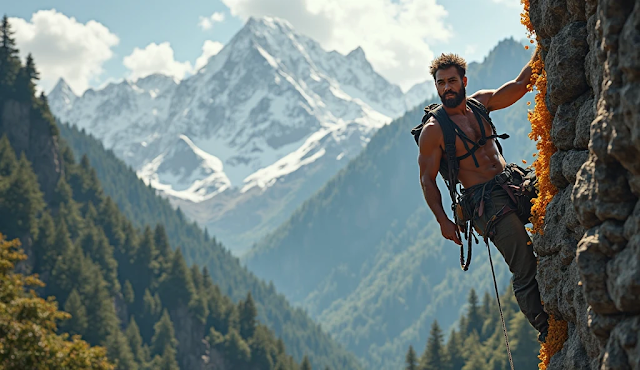Southwest Nepal, a region often overshadowed by the Himalayas and Kathmandu Valley, is a treasure trove of cultural richness, untouched wilderness, and historical intrigue. While most travelers flock to Everest or Annapurna, this lesser-explored corner offers authentic experiences for adventurers, history buffs, and nature enthusiasts alike. Below, we delve into Southwest Nepal’s best-kept secrets, blending SEO-friendly insights with detailed storytelling to guide your next adventure.
1. Bardiya National Park: Nepal’s Wild Frontier
Bardiya National Park is Southwest Nepal’s answer to Chitwan but with far fewer crowds. Established in 1988, this 968 km² wilderness is a biodiversity hotspot, home to 355 wild tigers (as of 2022) and endangered species like the Gangetic dolphin and one-horned rhinoceros 14. The park’s sal forests and riverine grasslands host over 230 bird species, including Sarus cranes and Bengal flamingos.
Why Visit?
Wildlife Safaris: Jeep or elephant-back safaris offer close encounters with tigers and rhinos.
Tharu Cultural Immersion: Attend traditional dance performances and explore village homestays .
Karnali River Rafting: Combine wildlife spotting with adrenaline-pumping rafting trips 1.
“Bardiya tiger safari” or “Tharu culture Nepal” to attract eco-tourists.
2. Tansen (Palpa): A Hilltop Time Capsule
Tansen, a cobblestone town perched at 1,450 meters, is a cultural gem renowned for its handwoven Dhaka fabric and Mughal-era architecture. The town’s Newari-influenced woodcarvings and medieval ambiance make it a photographer’s paradise.
Key Attractions:
Ranighat Palace (Rani Mahal): Dubbed the “Taj Mahal of Nepal,” this 19th-century palace on the Kali Gandaki River was built by General Khadga Shamsher Rana in memory of his wife. Its neoclassical design and secluded location make it a hauntingly beautiful stop 1113.
Srinagar Danda: Hike to this viewpoint for sunrise vistas of Dhaulagiri and Annapurna ranges.
Dhaka Weaving Centers: Watch artisans craft intricate textiles, a tradition dating back centuries 11.
Travel Tip: Pair Tansen with a visit to Lumbini, Buddha’s birthplace, for a spiritual-cultural combo.
3. Dhorpatan Hunting Reserve: Nepal’s Only Hunting Sanctuary
Dhorpatan, Nepal’s sole hunting reserve, spans 1,325 km² and blends alpine meadows with dense forests. While regulated hunting (for species like blue sheep) is permitted, the reserve is equally appealing for trekkers and birdwatchers 13.
Unique Experiences:
Trekking Routes: Trails wind through terraced fields and remote villages like Dhorpatan and Bogtan.
Wildlife Spotting: Look for snow leopards, red pandas, and the vibrant Himalayan monal.
Cultural Encounters: Meet Magar and Chhetri communities practicing ancient traditions.
“Nepal hunting tours” or “Dhorpatan trekking.”
4. Rani Mahal: The Taj Mahal of Nepal
Built in 1893 by General Khadga Shamsher Rana, Rani Mahal is a symbol of love and loss. Abandoned after the Rana family’s exile, the palace’s faded blue-and-white façade and Gothic arches now attract intrepid travelers. The site’s isolation adds to its mystique, with overgrown gardens and panoramic river views .
How to Visit:
Access: A 4-hour drive from Tansen, followed by a short hike.
Best Time: Visit during monsoon (June–September) when the Kali Gandaki River swells, enhancing the palace’s reflective beauty.
5. Kapilvastu: Ancient Kingdom of the Buddha
Though technically part of Nepal’s western Terai, Kapilvastu’s historical significance ties it to Southwest Nepal’s cultural tapestry. This ancient Shakya kingdom, where Buddha spent his early life, features ruins like Tilaurakot Palace and sacred stupas.
Must-See Spots:
Tilaurakot Excavations: Explore the remains of Buddha’s childhood palace.
Niglihawa Pillar: A 3rd-century BCE Ashoka pillar marking Buddha’s ancestral lineage.
“Buddhist heritage Nepal” or “Kapilvastu archaeological sites.”
6. Gulmi District: The Switzerland of Nepal
Gulmi, a lesser-known district, boasts rolling hills reminiscent of the Alps. Its microclimates support thriving coffee farms, while Tamghas Hill Station offers cool retreats with views of the Dhaulagiri range.
Activities:
Coffee Tours: Visit organic farms in Resunga and learn about Nepali arabica production.
Ridi Bazaar: A historic trading hub on the Kali Gandaki, famed for its medieval temples.
Travel Tips for Southwest Nepal
Best Time to Visit: October–March for mild weather and clear skies.
Transportation: Hire private jeeps or use local buses from Kathmandu/Pokhara.
Cultural Etiquette: Dress modestly in villages and seek permission before photographing locals.
Sustainability: Support community homestays and avoid plastic waste in national parks.
Conclusion: Embrace the Unexplored
Southwest Nepal’s hidden gems—from Bardiya’s jungles to Tansen’s heritage—offer a raw, unfiltered glimpse into the country’s soul. By venturing beyond the mainstream, travelers not only discover untouched landscapes but also contribute to preserving these cultural and ecological wonders. Ready to explore? Let Southwest Nepal redefine your idea of adventure.
hidden gems southwest Nepal, off-the-beaten-path Nepal, Bardiya National Park, Tansen Palpa, Rani Mahal Nepal, Dhorpatan Hunting Reserve, Nepal travel secrets
For further details, explore sources like Nepal Mother House Treks or Nepal Hiking Team .







0 Comments